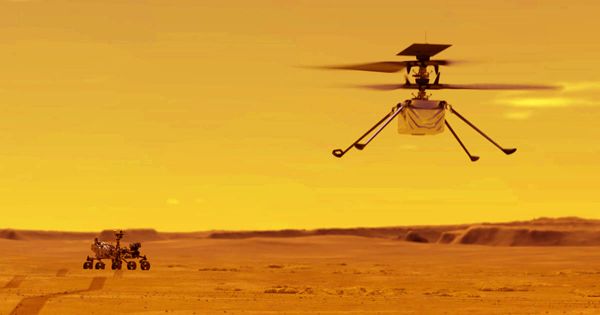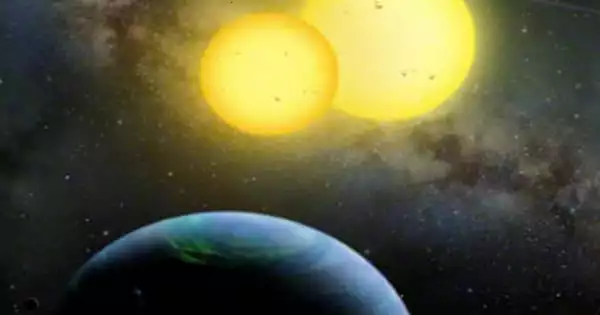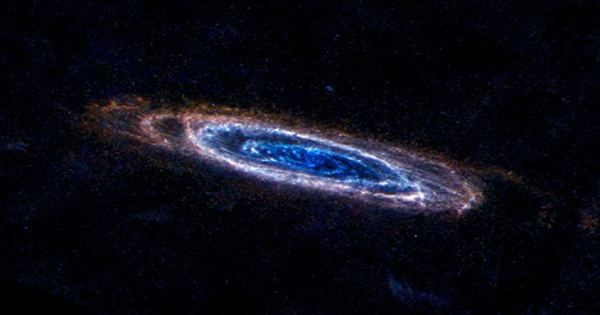According to fresh results from NASA’s MAVEN probe, a type of Martian aurora initially observed by the spacecraft in 2016 is actually the most common type of aurora seen on the Red Planet. A proton aurora is a type of aurora that can aid scientists in tracking water loss from Mars’ atmosphere.
Aurora are multicolored displays of light in the night sky that are most typically observed around the polar regions, where they are also known as the northern and southern lights.
The proton aurora on Mars, on the other hand, occurs during the day and emits ultraviolet light, making it invisible to the naked eye but detected by the MAVEN (Mars Atmosphere and Volatile EvolutioN) spacecraft’s Imaging UltraViolet Spectrograph (IUVS).
MAVEN’s purpose is to figure out how the Red Planet lost so much of its atmosphere and water that its climate changed from one that could support life to one that is cold, dry, and hostile.
Because the proton aurora is caused by hydrogen obtained from Martian water that is in the process of being lost to space, it might be used to detect ongoing water loss on Mars.
“In this new study using MAVEN/IUVS data from multiple Mars years, the team has found that periods of increased atmospheric escape correspond with increases in proton aurora occurrence and intensity,” said Andréa Hughes of Embry-Riddle Aeronautical University in Daytona Beach, Florida.
By comparison, IUVS has detected diffuse aurora on Mars in a few percent of orbits with favorable geometry, and discrete aurora detections are rarer still in the dataset.
Nick Schneider
Hughes is the primary author of a publication about this research that was published in the Journal of Geophysical Research, Space Physics on December 12th. When interplanetary travel becomes more popular, travelers arriving on Mars during the southern summer may enjoy front-row seats to watch the Martian proton aurora gracefully dance over the planet’s dayside (while wearing ultraviolet-sensitive goggles, of course).
These visitors will see the final steps of Mars losing the last of its water to space firsthand. Hughes will report his findings at the American Geophysical Union meeting in San Francisco on December 12.
Different types of aurora are produced by different phenomena. Solar activity, whether in the form of high-speed particle explosions known as solar storms, gas and magnetic field eruptions known as coronal mass ejections, or gusts in the solar wind, a stream of electrically conducting gas that blows continuously into space at around a million miles per hour, is responsible for all aurora on Earth and Mars.
The northern and southern lights, for example, occur when Earth’s magnetosphere is disrupted by severe solar activity, causing high-velocity electrons to collide into gas particles in the nightside upper atmosphere, causing them to glow. Mars’ discrete and diffuse aurora, two forms of aurora previously discovered on the Martian nightside, are generated by similar processes.
Solar wind protons (hydrogen atoms stripped of their lone electrons by extreme heat) mix with the upper atmosphere on Mars’ dayside to produce proton aurora.
As they get closer to Mars, the protons in the solar wind grab electrons from hydrogen atoms in the planet’s hydrogen corona, a massive cloud of hydrogen that surrounds it.
When those fast-moving atoms collide with the atmosphere, some of their energy is emitted in the form of ultraviolet light. When the MAVEN crew first saw the proton aurora, they felt it was a once-in-a-lifetime event.
“At first, we believed that these events were rather rare because we weren’t looking at the right times and places,” said Mike Chaffin, research scientist at the University of Colorado Boulder’s Laboratory for Atmospheric and Space Physics (LASP) and second author of the study. “But after a closer look, we found that proton aurora are occurring far more often in dayside southern summer observations than we initially expected.”
When only dayside southern summer data are included, the team finds proton aurora in roughly 14% of their dayside observations, which jumps to more than 80% of the time.
“By comparison, IUVS has detected diffuse aurora on Mars in a few percent of orbits with favorable geometry, and discrete aurora detections are rarer still in the dataset,” said Nick Schneider, coauthor and lead of the IUVS team at LASP.
The link to the southern summer provided an explanation for why proton auroras are so abundant and how they might be used to detect water depletion. During the southern summer on Mars, the planet is also nearing its closest approach to the Sun in its orbit, which can result in massive dust storms.
By driving water vapor high in the atmosphere, summer warming and dust activity appear to create proton auroras. Water is broken down into its constituents, hydrogen and oxygen, by solar intense ultraviolet light. The light hydrogen is poorly held by Mars’ gravity, which increases hydrogen loss to space by enhancing the hydrogen corona surrounding Mars.
Because there is more hydrogen in the corona, interactions with solar-wind protons are more common, resulting in more frequent and brighter proton aurora.
“All the conditions necessary to create Martian proton aurora (e.g., solar wind protons, an extended hydrogen atmosphere, and the absence of a global dipole magnetic field) are more commonly available at Mars than those needed to create other types of aurora,” said Hughes.
“Also, the connection between MAVEN’s observations of increased atmospheric escape and increases in proton aurora frequency and intensity means that proton aurora can actually be used as a proxy for what’s happening in the hydrogen corona surrounding Mars, and therefore, a proxy for times of increased atmospheric escape and water loss.”
The MAVEN mission provided funding for this study. The MAVEN project is managed by NASA Goddard and its principal investigator is situated at the University of Colorado’s Laboratory for Atmospheric and Space Physics in Boulder, Colorado. With our formidable fleet of space and ground-based missions, NASA is exploring our Solar System and beyond, revealing worlds, stars, and cosmic secrets close and distant.
















